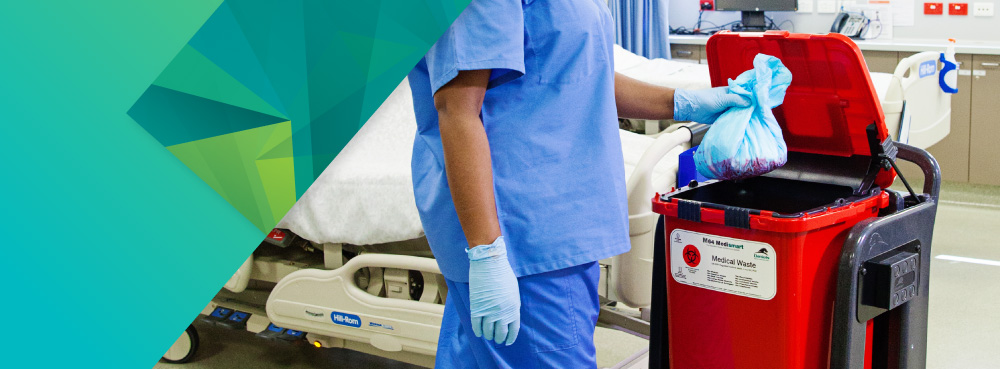Exploring Various Waste Disposal Options for a Cleanser Setting
In the quest of a cleaner atmosphere, the administration of waste disposal has emerged as a critical focal factor for sustainable advancement. With a wide variety of waste disposal options readily available, varying from standard land fill techniques to innovative waste-to-energy modern technologies, the selection of how we handle our waste has far-reaching effects for our world's health.
Recycling Techniques
Applying efficient recycling techniques is essential in decreasing waste and promoting sustainability in our environment. Recycling entails the procedure of transforming waste materials into recyclable items to protect against unneeded disposal.
One more crucial recycling technique is composting, which involves breaking down organic waste like food scraps and lawn trimmings right into nutrient-rich dirt. By integrating these different recycling approaches right into our waste administration practices, we can significantly reduce our ecological impact and move in the direction of a more lasting future.

Composting Methods
Effective waste administration methods, such as recycling methods, pave the way for a cleaner environment, and now, changing the emphasis to 'Composting Techniques', we explore sustainable ways to decay natural waste for ecological benefit. medical waste removal service.
Composting is a natural procedure that transforms natural waste, like food scraps and backyard trimmings, into a nutrient-rich soil change. The trick to effective composting hinges on producing the appropriate balance of environment-friendly materials, such as fruit and veggie scraps, and brownish materials, like dried out branches and fallen leaves. These materials disintegrate with the help of microbes, breaking down the waste into important compost.
Typical yard composting includes layering natural products in a bin or stack and consistently transforming the combination to aerate it. By making use of composting strategies, we can lower the quantity of waste sent out to garbage dumps while developing a beneficial product for enriching soil and sustaining plant development.
Incineration Disadvantages and pros
Incineration, as a waste disposal technique, offers both advantages and negative aspects that merit cautious factor to consider in the realm of sustainable waste administration practices. On the positive side, incineration can significantly minimize the quantity of waste, reducing the need for land fill space and potentially lowering greenhouse gas exhausts.
Furthermore, the high first financial investment and functional prices of incineration centers position financial obstacles, making it a less economical option compared to various other waste administration methods. Cautious tracking and regulation are necessary to alleviate these unfavorable influences and make best use of the benefits of incineration as part of a thorough waste administration strategy.
Land Fill Monitoring Methods
Garbage dumps play a critical duty in waste monitoring and environmental conservation by offering a control system for the disposal of solid waste materials. By condensing the waste, the quantity is minimized, enabling for more waste to be suited over time.
Furthermore, the execution of day-to-day cover techniques is crucial in decreasing odors, avoiding clutter, and minimizing the tourist attraction of insects. Treatment the disposed waste at the end of every day helps to have smells and avoid potential ecological contamination. Furthermore, the monitoring of garbage dump gas emissions and leachate degrees is critical in guaranteeing that environmental criteria are satisfied which any kind of prospective risks to bordering environments are minimized.

Waste-to-Energy Technologies
One of the ingenious techniques to throw away management includes taking advantage of Waste-to-Energy modern technologies to convert strong waste into useful energy resources. Waste-to-Energy (WtE) innovations encompass a series of processes that intend to remove energy from waste products via thermal, chemical, or organic ways. This conversion procedure not just lowers the quantity of waste that finishes up in garbage dumps however additionally produces valuable power sources such as electrical power, warm, or biofuels.
There are a number of approaches of Waste-to-Energy conversion, including incineration, gasification, and pyrolysis. Incineration involves melting waste at high temperature levels to create warmth and electricity. Gasification transforms waste into a syngas, which can be used for power generation or chemical manufacturing. Pyrolysis breaks down natural materials utilizing heats in the lack of oxygen, creating char, gas, and bio-oil.
Executing Waste-to-Energy technologies can aid alleviate environmental concerns related to conventional waste disposal methods while simultaneously supplying a renewable resource source. Nevertheless, careful factor to consider needs to be provided to exhausts control and making sure the sustainability of feedstock supplies for these technologies to be truly valuable for a cleaner atmosphere.

Conclusion
Finally, discovering various waste disposal choices such as reusing, composting, incineration, land fill management, and waste-to-energy innovations is crucial for advertising a cleaner setting - click here. Each technique has its own benefits and challenges, however by utilizing a mix of these methods, we can function in the direction of reducing the quantity of waste that winds up in landfills and eventually add to a much more lasting future for generations to come
With a wide range of waste disposal choices offered, ranging from conventional land fill techniques to innovative waste-to-energy innovations, the choice of exactly how we handle our waste has far-ranging effects for our planet's get redirected here health. medical waste removal service.Incineration, as a waste disposal method, offers both benefits and negative aspects that merit careful consideration in the realm of sustainable waste management practices.Land fills play a vital function in waste administration and environmental conservation by giving a control system for the disposal of strong waste products. By compacting the waste, the volume is decreased, allowing for more waste to be fit over time
One of the innovative techniques to waste administration entails utilizing Waste-to-Energy technologies to transform strong waste right into functional energy resources.